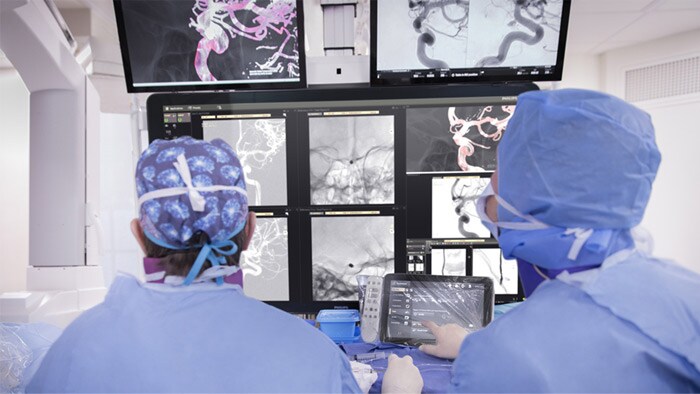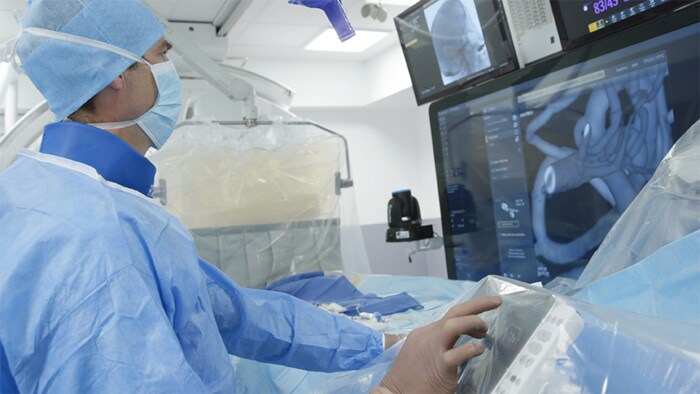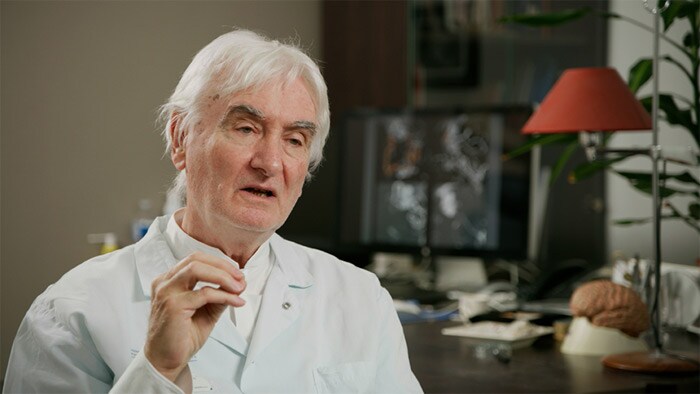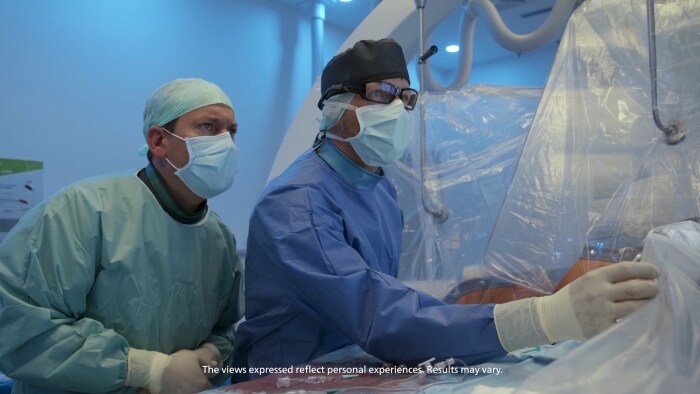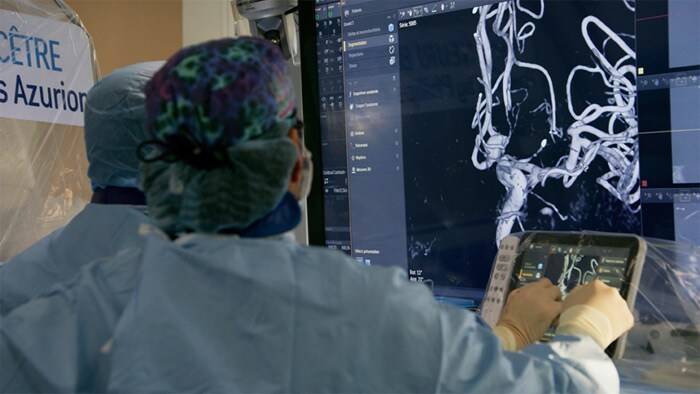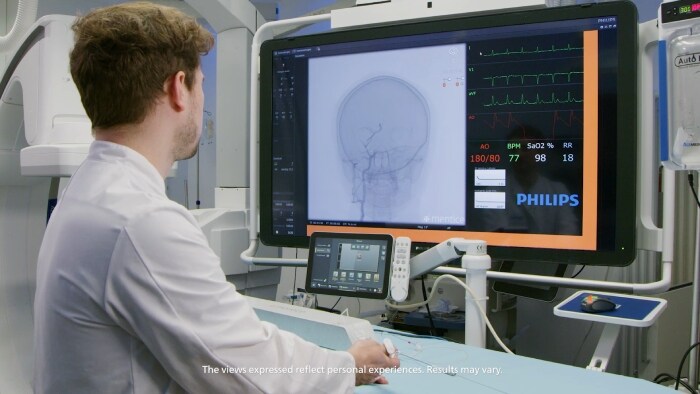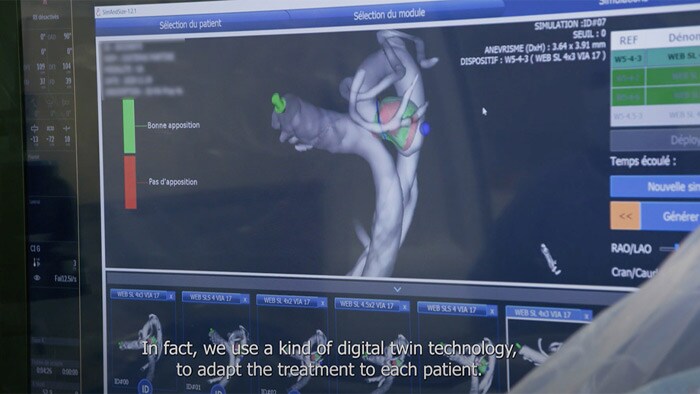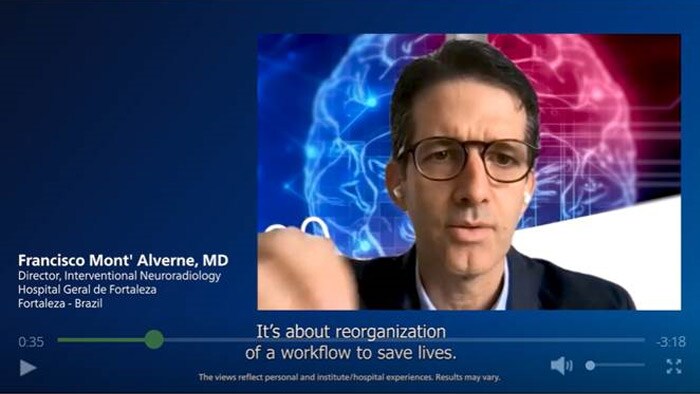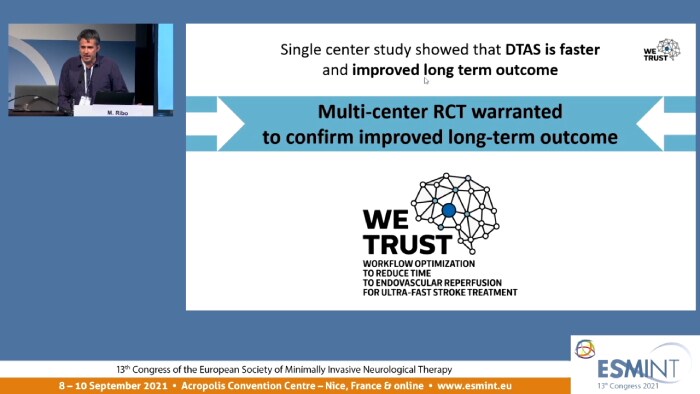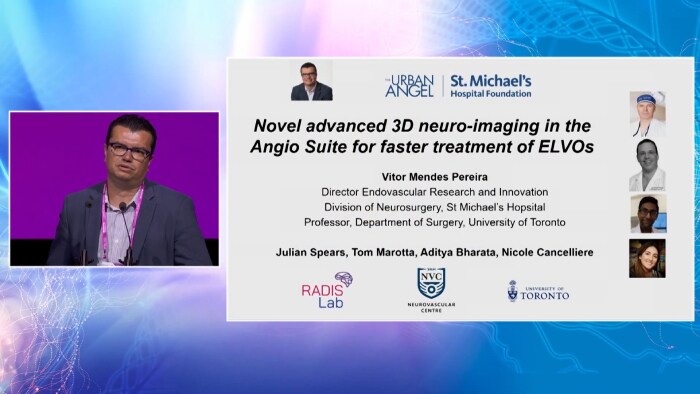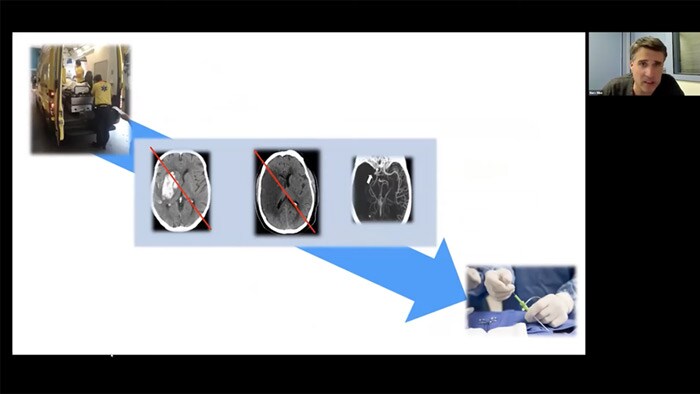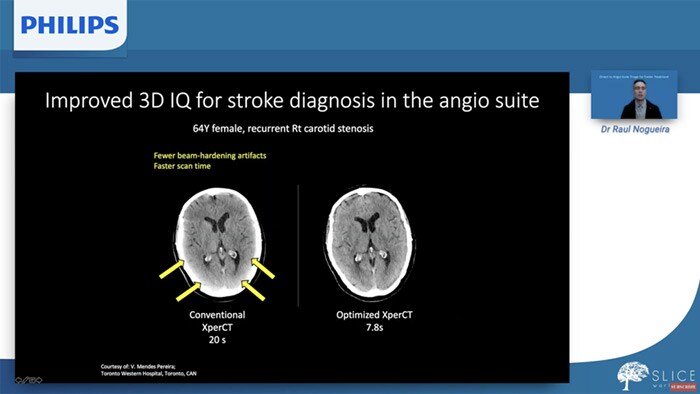Neuro suite solutions
Clinical leaders sharing their experiences with Philips Azurion with SmartCT during diagnosis and treatment of neuro-interventional procedures.
Prof Costalat and Dr Gascou share their experiences with the Azurion system and SmartCT (3D imaging) during diagnosis and treatment with the Azurion Neuro suite.
Learn the experience of Prof Moret, Prof Spelle and their colleagues with the Azurion system and SmartCT.
Interventional Neuroradiologists from University Hospital Rechts der Isar – Munich share how the Philips Azurion improved their workflow for neurovascular procedures.
Interventional neuroradiologists from CHU - Montpellier and Hôpital Bicêtre - Paris talk about the importance of 3D imaging during neurovascular procedures.
Learn about the importance of simulation in neurovascular training, with the Mentice VIST Virtual Patient Simulator – integrated in the Philips Azurion through ConnectOS.
Philips Azurion with ConnectOS enables the introduction of third party specialized software right into the angio suite.
Direct to Angio Suite
Time to reperfusion is fundamental in reducing morbidity and mortality in acute stroke cases1, 2, 3. In patients presenting directly to an endovascular-capable center, emphasis has now been placed on fast door-to-imaging times and fast imaging to groin access times. Watch the video to see how this works.
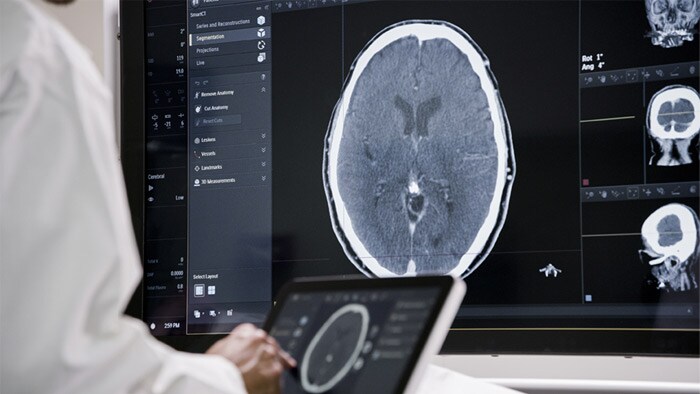
Experts explain how Direct to Angio Suite workflows shorten door to re-perfusion times for their ischemic stroke patients and how more patients can benefit from mechanical thrombectomy through changed guidelines.
An interview with (interventional) neurologists about the importance of the direct to angio approach, and the challenges they face.
Dr. Marc Ribó explains how Direct to Angio Suite workflows shorten door to re-perfusion times for their ischemic stroke patients.
This symposium session took place during the ESMINT 2021.
Dr. Vitor Mendes Pereira explains how 3D imaging in the angio suite influences faster treatment of ELVOs.
This symposium session took place during the LINNC Paris, 2021.
‘If we think that the technology is ready to do that, I think we should go ahead and start taking our patients directly to the angio suite.’ Dr Marc Ribó (Hospital Val d’Hebron, Barcelona), PAIRS 2020 virtual event
Dr Raul Nogueira (Grady Memorial Hospital, Atlanta) and Dr Marc Ribó (Hospital Val d’Hebron, Barcelona) at the SLICE Worldwide 2020 virtual event
‘Significant advances in technology mean that we are now able to identify, plan and treat ischemic stroke patients in the angiography suite, without the need for a separate CT or MR scan.’
Dr Raul Nogueira (Grady Memorial Hospital, Atlanta), LINNC 2019
1 Mendez B. et al. 2018. Direct Transfer to Angio-Suite to Reduce Workflow Times and Increase Favorable Clinical Outcome. DOI: 10.1161/STROKEAHA.118.021989 2 Saver J et al., 2016 Sep 27;316(12):1279-88. doi: 10.1001/jama.2016.13647. 3 Jadhav AP, et al. Stroke. 2017;48:1884-1889
